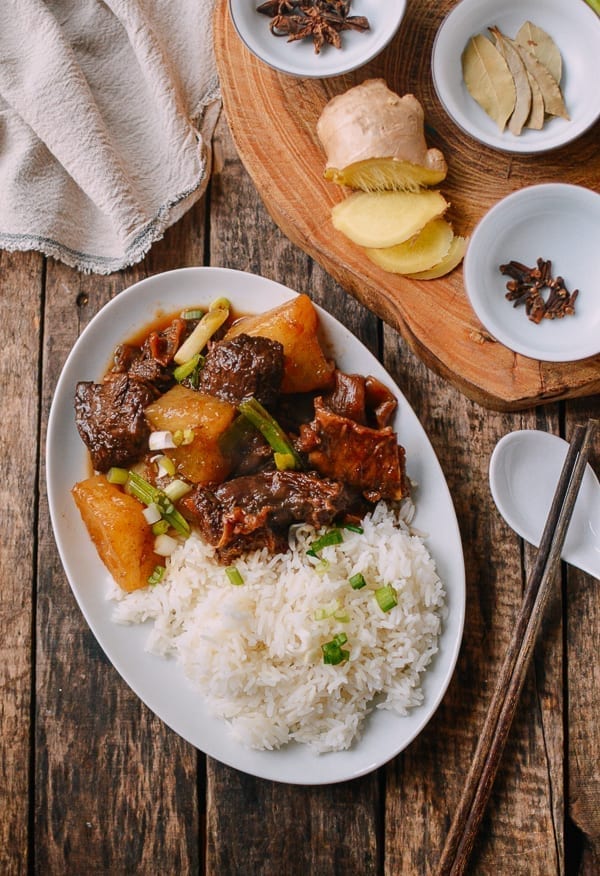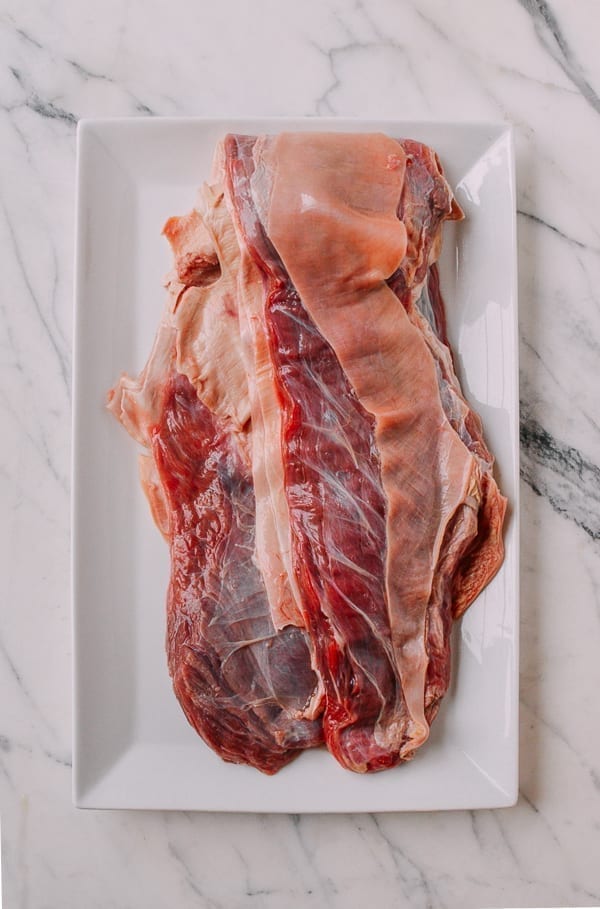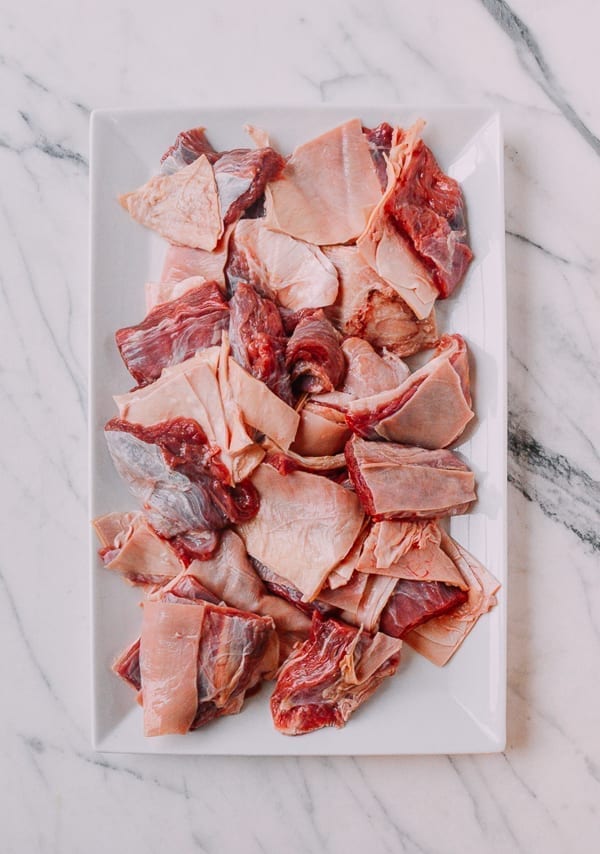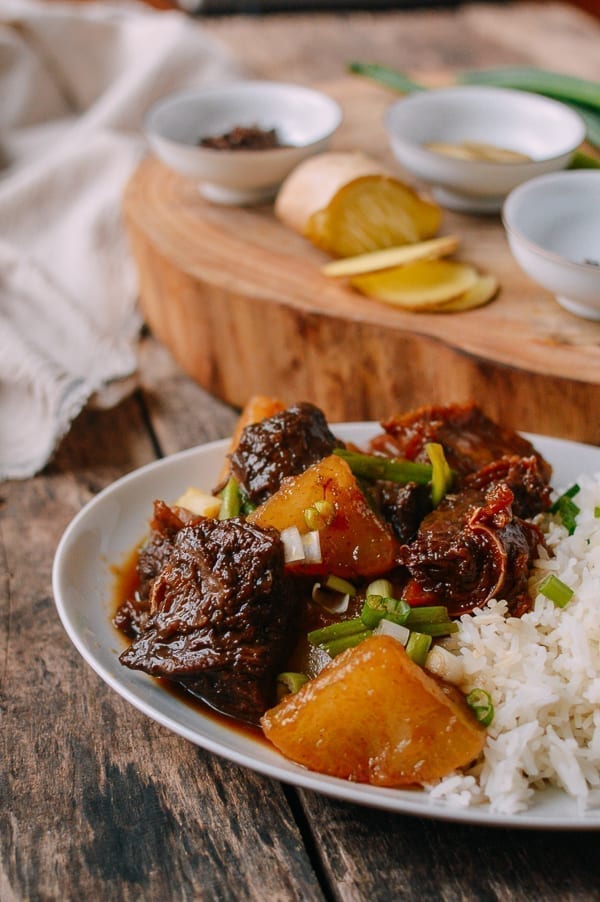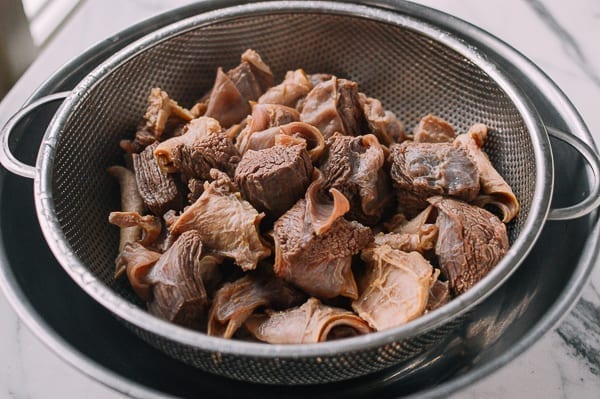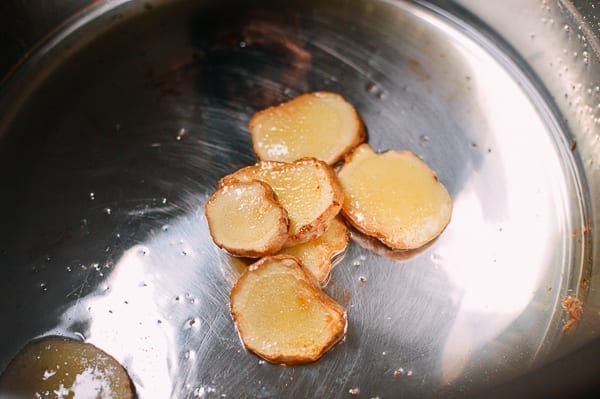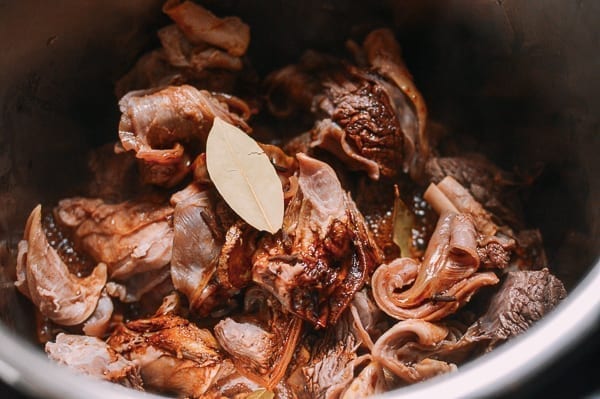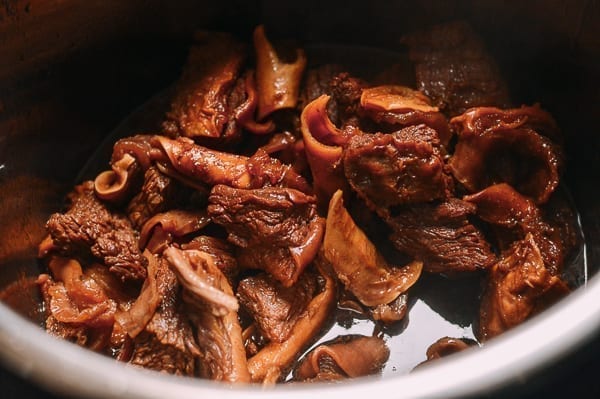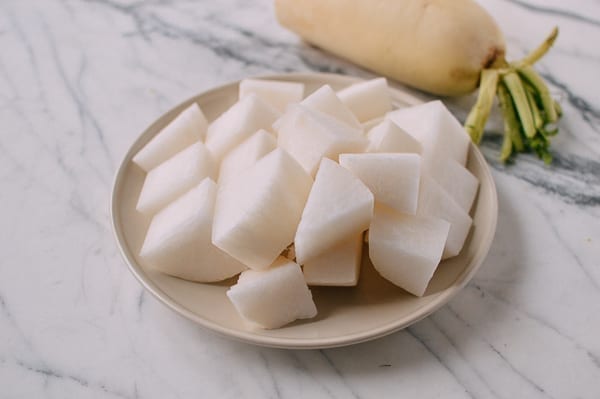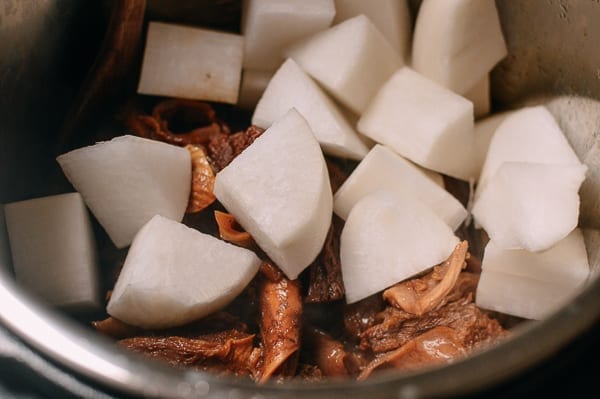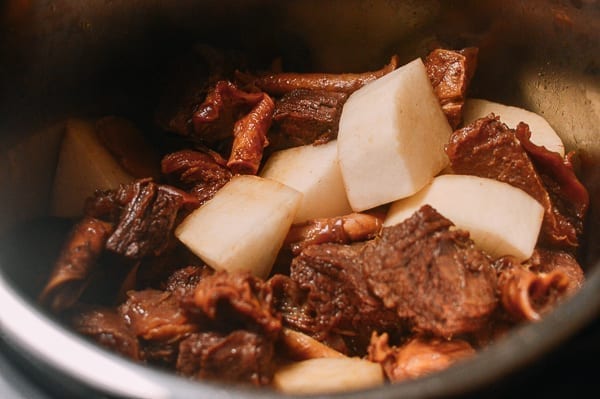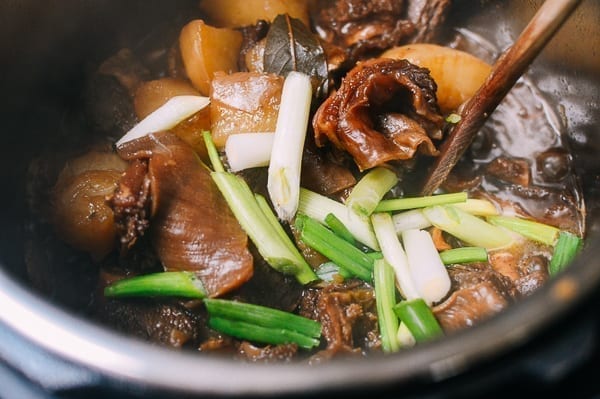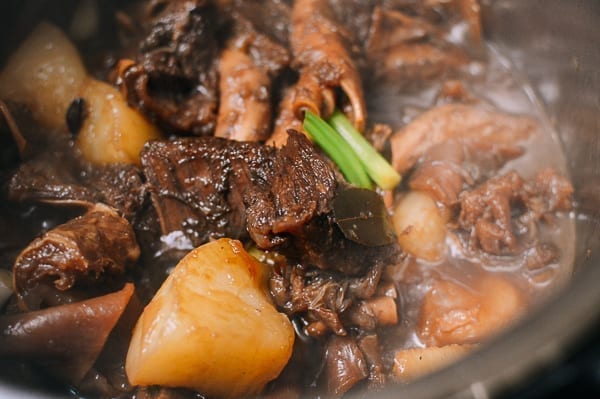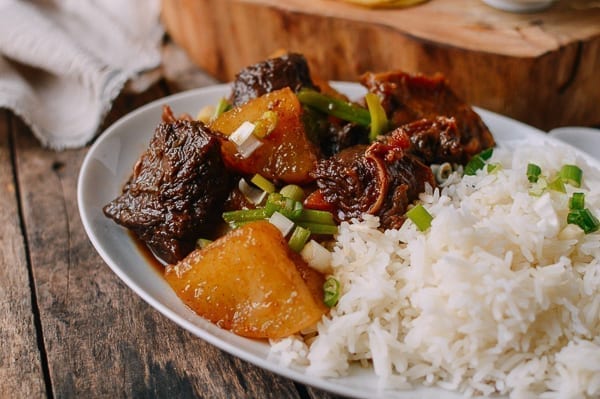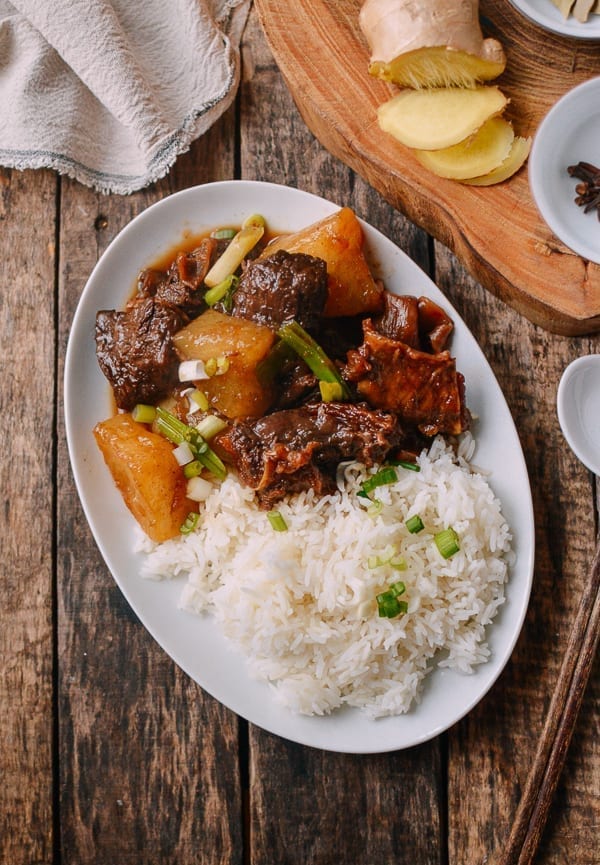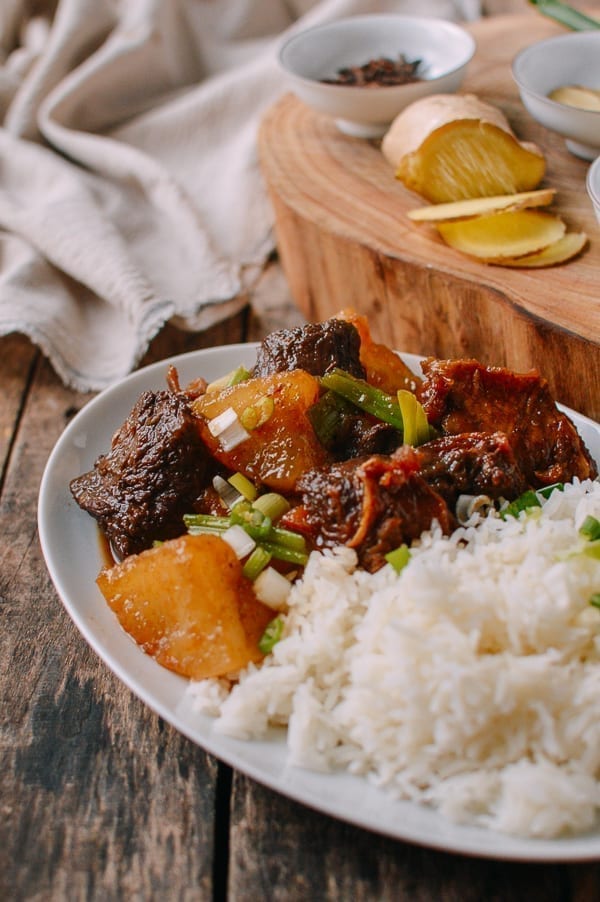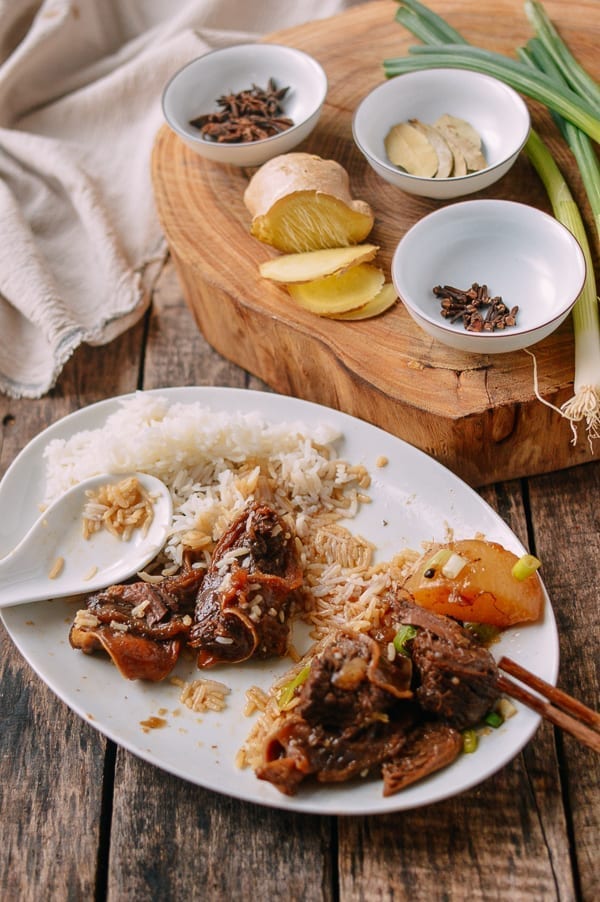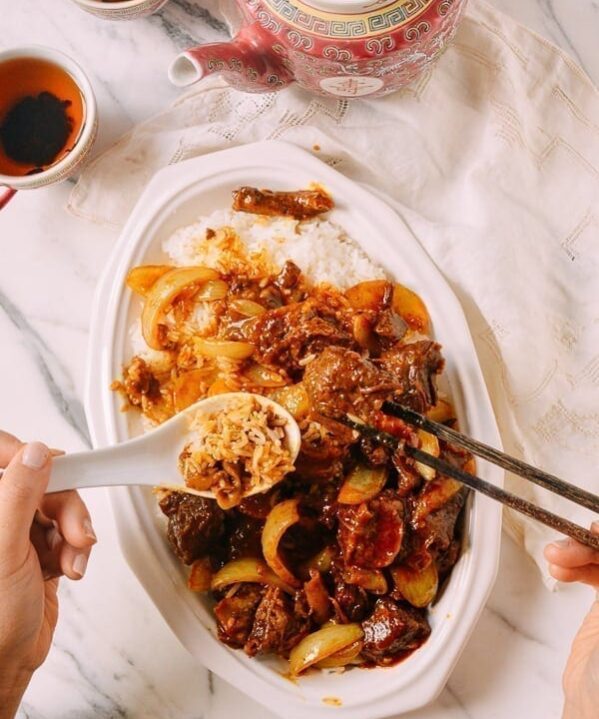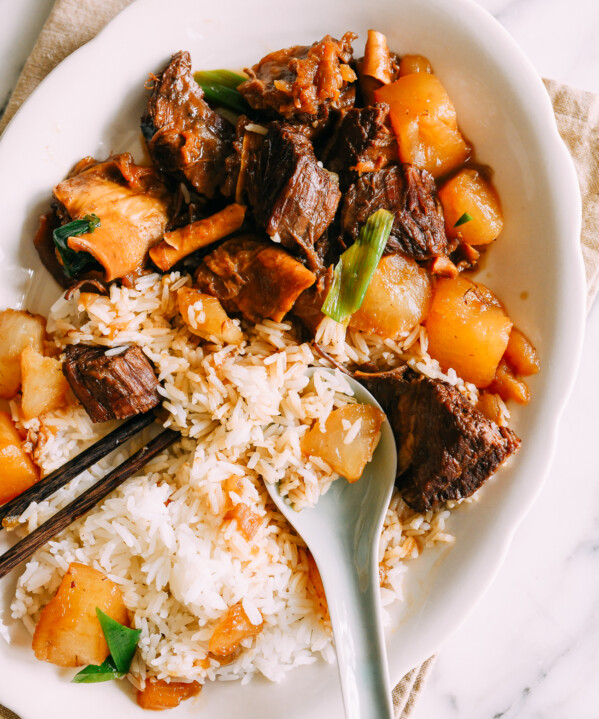Cantonese Beef Stew is a dish that always popped in and out of my childhood. Sometimes it would be bubbling away in a clay pot at a Chinatown restaurant, and sometimes it was scooped out of a big pot at home. The tender, gelatinous pieces of beef and melt-in-your-mouth chunks of radish in a thin gravy, served over rice? Total comfort food. This Instant Pot Braised Beef with Radish is my shortcut pressure cooker version, with a few tweaks and improvements from the original Cantonese braised beef recipe we posted back in the early days of the blog.
Cantonese Comfort Food
My dad’s family is Cantonese, and my mom’s side of the family is from Shanghai. While my sister and I grew up eating dishes from both cuisines, my mom once asked us…if we had to choose, which would we rather have? A table filled with Shanghainese classics like braised pork belly, soup dumplings (xiao long bao), drunken chicken, and scallion oil noodles? Or a table of Cantonese classics like Salt and Pepper Pork Chops, steamed whole fish, and this braised beef with radish?
While I have a special place in my heart reserved for xiao long bao, and my sister is obsessed with scallion oil noodles, we both sheepishly turned to each other and said, back-against-the-wall, we’d choose the Cantonese table.
There’s just something particularly homey and comforting about Cantonese food, especially saucy things over rice, like this Instant Pot Braised Beef with Radish. There’s just nothing better.
Rough Flank: A Tough Cut of Meat!
Now that I’m officially an Instant Pot convert, I decided to create a pressure cooker Cantonese braised beef with radish recipe. Like my Instant Pot Curry Beef recipe, this recipe uses a cut of beef called rough flank (niu nan in Mandarin, or ngau lam in Cantonese).
It’s a pretty tough cut of meat, full of tendony, sinewy, and gristly bits that when cooked for hours, all work together to produce a delicious texture. We cut them into pretty big, 2 1/2 inch chunks, as you can see below, because they’ll shrink when cooked.
The Instant Pot helps tenderize that tough cut of meat in much less time, which is key when you’re looking for a comfort food dinner and may not have 4-6 hours to make it.
Cantonese Instant Pot Braised Beef with Radish: The Recipe
Fill your wok with cold water, and add the beef. Place over high heat, bring to a boil, and cook the beef for 1 minute to remove any impurities (see all that foam and scum in the photo below? That’s the stuff you don’t want in your stew!)
Use a slotted spoon to remove the beef to a colander, and rinse. Set aside.
Heat 2 tablespoons vegetable oil in your Instant Pot on the saute setting. Add the fresh ginger slices, and cook for 2-3 minutes, until fragrant and slightly crisped at the edges.
Add the blanched beef, Shaoxing wine, light soy sauce, dark soy sauce, oyster sauce, 3 star anise, 5 cloves, 3 bay leaves, and 1 tablespoon sugar.
Seal the Instant Pot, make sure the valve is set to “sealing,” and turn on the meat/stew for 45 minutes. The float valve on the top of the Instant Pot will raise when under pressure.
Once finished, allow the Instant Pot to release pressure naturally. Once the Instant Pot is safe to open (pressure is fully released when the float valve has dropped back into the lid), open it up. Here’s what the stew will look like at this stage:
Next, add the radish chunks.
Stir to combine with the beef.
Replace the lid, seal the Instant Pot, move the valve back to the sealing position, and put it back on manual high pressure for 10 minutes. Once done, allow the pressure to release again using Quick Pressure Release this time (be careful moving the valve, as the steam released will be very hot. Use an oven mitt!).
Open the pot when safe. Turn on the saute setting and bring the stew to a simmer. Mix together chicken stock or water and cornstarch into a slurry and stir into the stew to thicken. Simmer for 2 minutes, season with salt to taste, and stir in the scallions.
Serve your Instant Pot braised beef with rice!
Cantonese Instant Pot Braised Beef with Radish
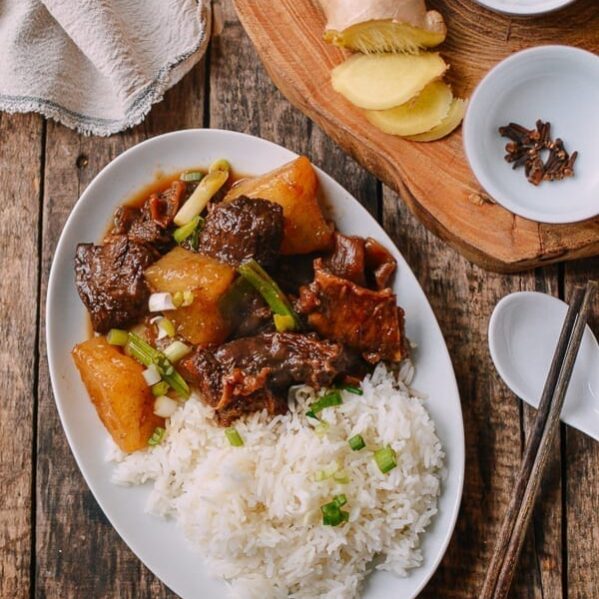
Ingredients
- 3 to 3 ½ lbs beef rough flank (1.5 kg, cut into 2 1/2-inch pieces)
- 2 tablespoons vegetable oil (30 ml)
- 7 slices ginger
- 1 cup Shaoxing wine (240 ml)
- 3 tablespoons light soy sauce (45 ml)
- 1 tablespoon dark soy sauce (15 ml)
- 1 tablespoon oyster sauce (15 ml)
- 3 pieces star anise
- 5 cloves
- 3 bay leaves
- 1 tablespoon sugar (12g)
- 2 pounds daikon radish (1 kg, peeled and cut into 1-½ inch pieces)
- ¼ cup chicken stock or water (mixed with 2 teaspoons cornstarch)
- Salt (to taste)
- 2 scallions (cut on a diagonal into 1-inch pieces)
Instructions
- Fill your wok with cold water, and add the beef. Place over high heat, bring to a boil, and cook the beef for 1 minute to remove any impurities. Use a slotted spoon to remove the beef to a colander, and rinse. Set aside.
- Heat 2 tablespoons vegetable oil in your Instant Pot on the saute setting. Add the ginger slices, and cook for 2-3 minutes, until fragrant and slightly crisped at the edges.
- Add the blanched beef, Shaoxing wine, light soy sauce, dark soy sauce, oyster sauce, 3 star anise, 5 cloves, 3 bay leaves, and 1 tablespoon sugar.
- Seal the Instant Pot, make sure the valve is set to “sealing,” and turn on the meat/stew for 45 minutes. The float valve on the top of the Instant Pot will raise when under pressure.
- Once finished, allow the Instant Pot to release pressure naturally. Once the Instant Pot is safe to open (pressure is fully released when the float valve has dropped back into the lid), open it and add the radish chunks. Stir to combine with the beef.
- Replace the lid, seal the Instant Pot, move the valve back to the sealing position, and put it back on manual high pressure for 10 minutes. Once done, allow the pressure to release again using Quick Pressure Release this time (be careful moving the valve, as the steam released will be very hot. Use an oven mitt!).
- Open the pot when safe. Turn on the Saute setting and bring the stew to a simmer. Mix together chicken stock or water and cornstarch into a slurry and stir into the stew to thicken. Simmer for 2 minutes, season with salt to taste, and stir in the scallions.
- Serve with rice!
nutrition facts
